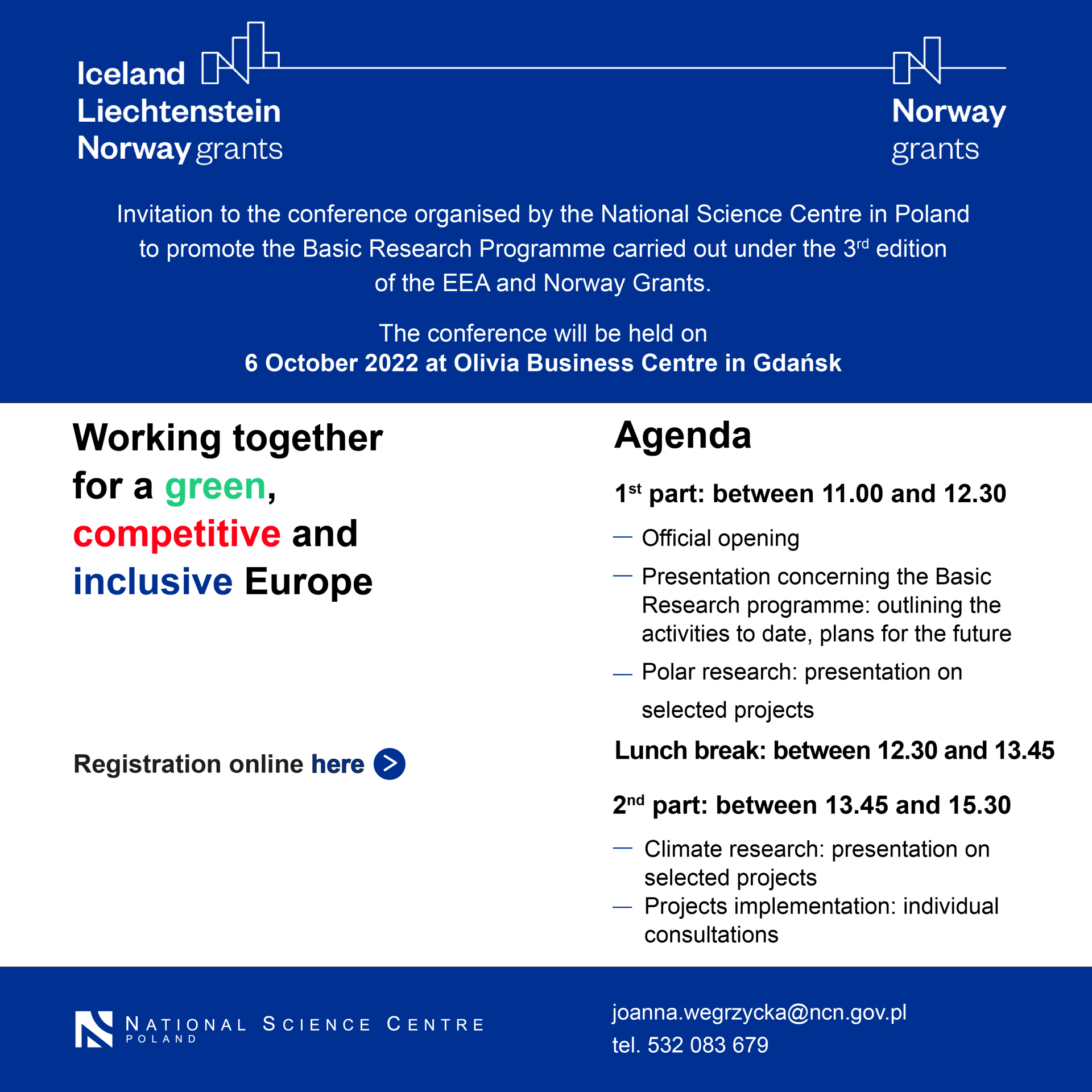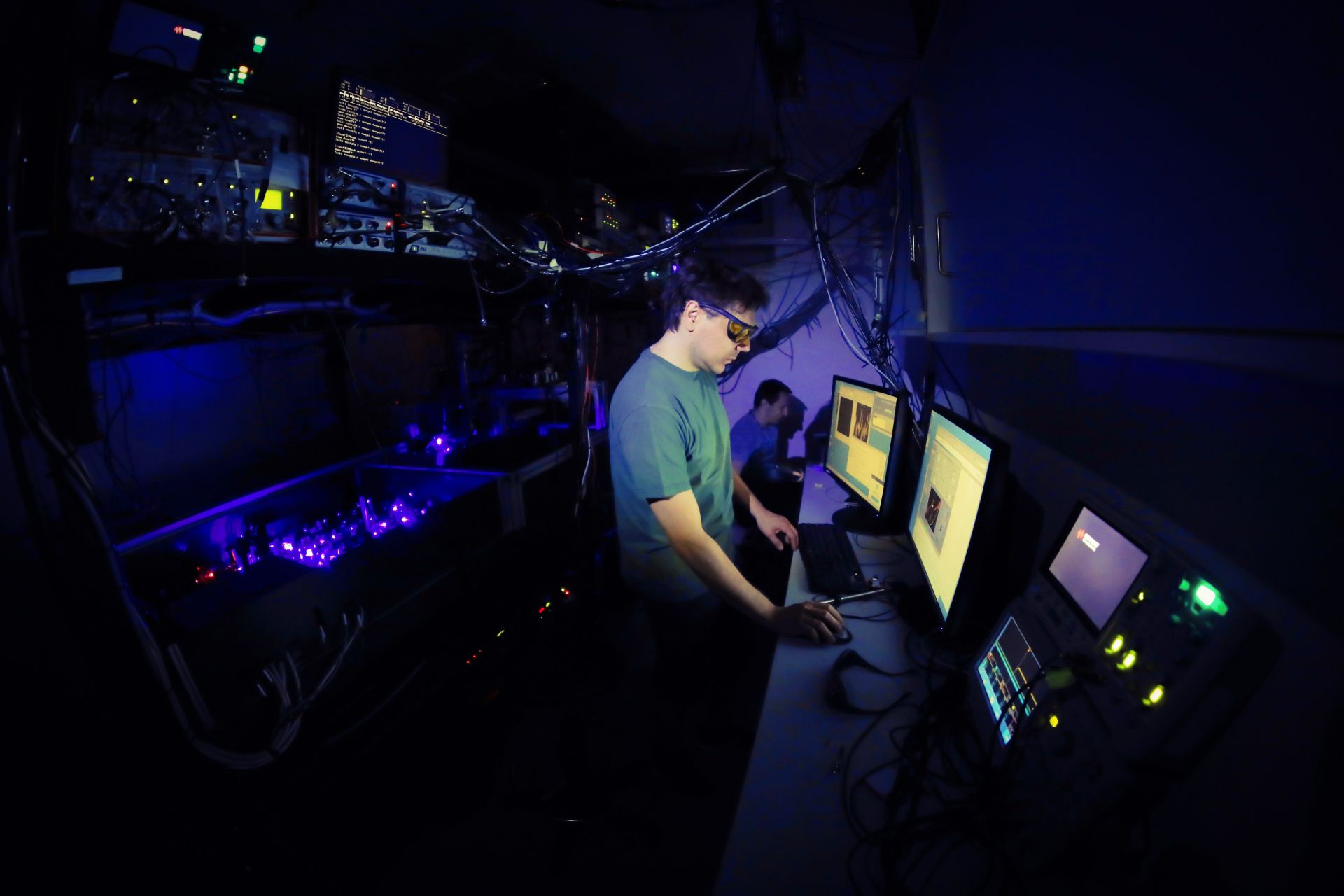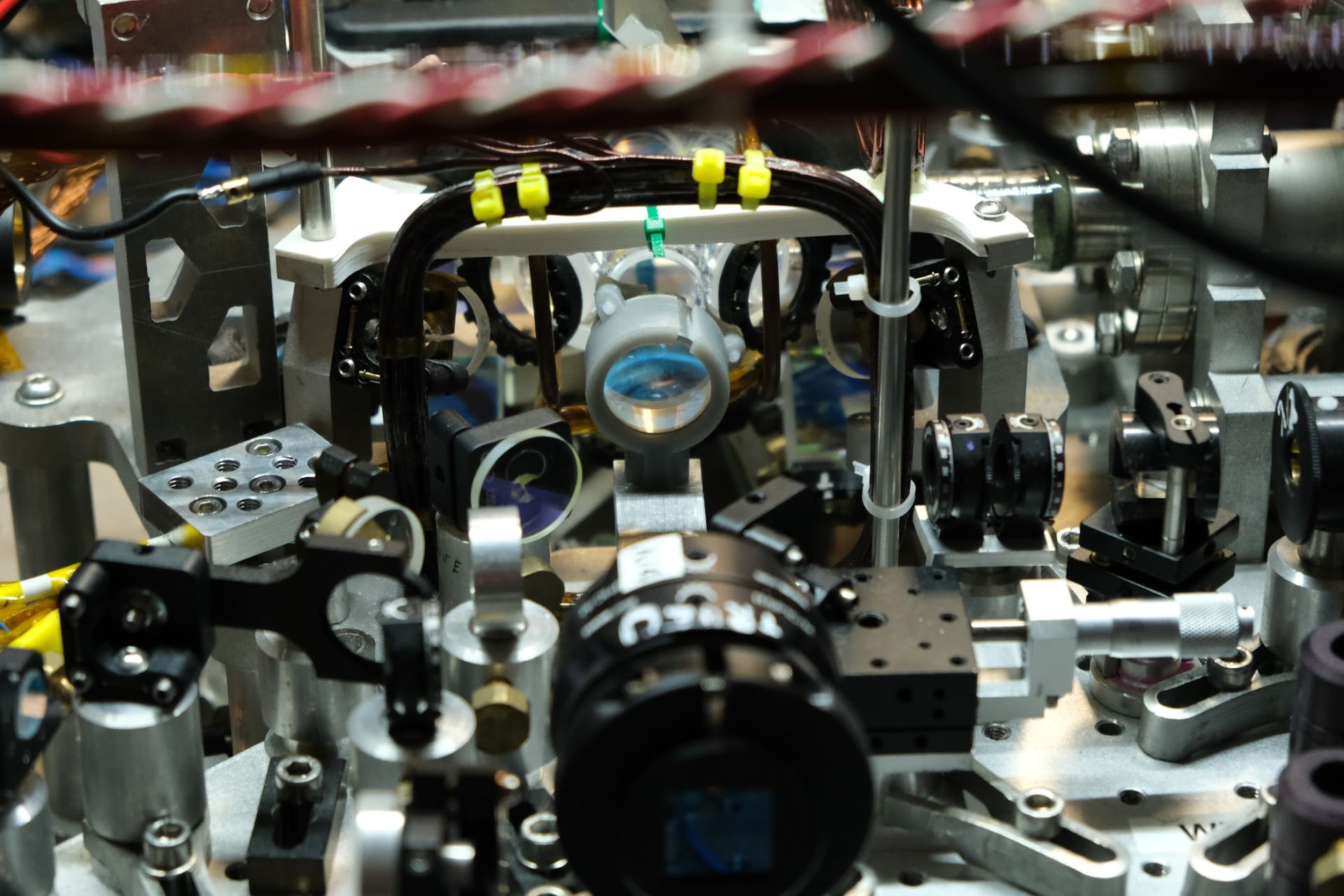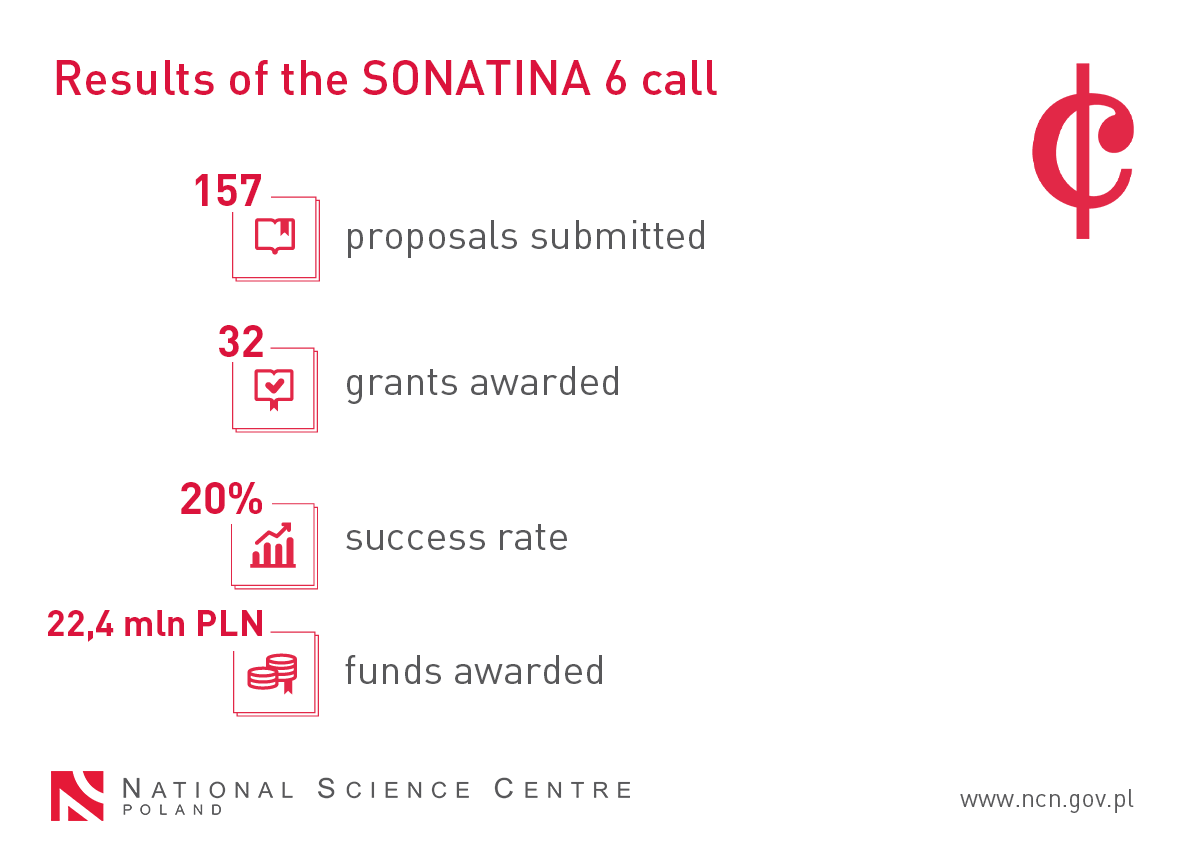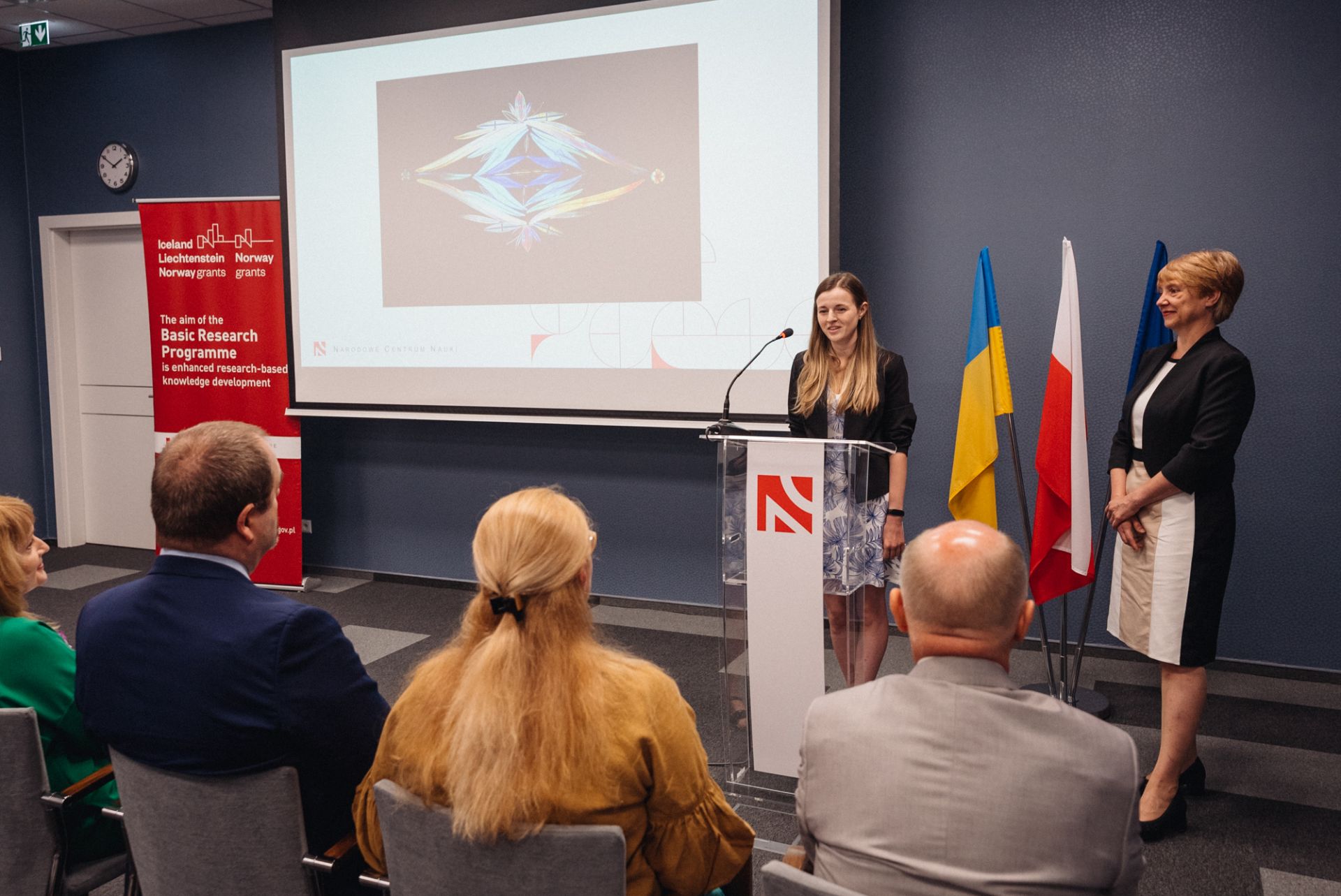SONATA 18
15 September 2022
The National Science Centre (the “NCN”) has launched the SONATA 18 call for research projects addressed at researchers with a PhD degree conferred within 2 to 7 years before the proposal submission year. The applicants may apply for funding of their basic research projects to be carried out over a period of 12, 24 or 36 months.
The call budget is 120,000,000 PLN.
Proposals may be submitted solely electronically via OSF, available at https://osf.opi.org.pl in compliance with the proposal submission procedure.
The call for proposals in OSF is open until 15 December 2022, 4 p.m..
The call results will be announced in June 2023.
Please read the call documents provided in this announcement.
 Who may apply for funding?
Who may apply for funding?
Proposals in the call may be submitted by any entity laid down in the Act on the National Science Centre (NCN), namely:
- universities;
- federations of science and HE entities;
- research institutes of the Polish Academy of Science operating pursuant to the Act on the Polish Academy of Sciences of 30 April 2010 (Journal of Laws of 2020, item 1796, as amended);
- research operating pursuant to the Act on Research Institutes of 30 April 2010 (Journal of Laws of 2020, item 1383, as amended);
- international research institutes established pursuant to separate acts, operating in the Republic of Poland;
5a. Łukasiewicz Centre operating pursuant to the Act on the Łukasiewicz Research Network of 21 February 2019 (Journal of Laws of 2020, item 2098);
5b. institutes operating within the Łukasiewicz Research Network;
- Polish Academy of Arts and Sciences;
- other entities involved in research independently on a continuous basis;
- groups of entities (at least two entities mentioned in sections 1-9 or at least one institution as such together with at least one company);
- scientific and industrial centres within the meaning of the Act on Research Institutes of 30 April 2010 (Journal of Laws of 2020, item 1383, as amended);
- research centres of the Polish Academy of Sciences within the meaning of the Act on the Polish Academy of Sciences of 30 April 2010 (Journal of Laws of 2020, item 1796);
- scientific libraries;
- companies operating as R&D centres within the meaning of the Act on Certain Forms of Support for Innovative Activity of 30 May 2008 (Journal of Laws of 2021, item 706);
- legal entities established with registered office in Poland;
13a. President of the Central Office of Measures;
- natural persons; and
- companies conducting research in another organisational form than laid down in sections 1-13.
 Who may act as the principal investigator?
Who may act as the principal investigator?
Researchers with a PhD degree conferred within 2 to 7 years before the proposal submission year (i.e. between 1.01.2015 - 31.12.202) act as the principal investigator in a project submitted to the SONATA call. In specific cases, this period may be extended.
The scientific track record of the principal investigator must include at least one paper published or accepted for publication. For research in art, the principal investigator must have at least one paper published or accepted for publication or at least one artistic achievement or achievement in research in art.
The scientific track record must be presented from a period of 10 years prior to the proposal submission (starting from 2012). In specific cases, this period may be extended.
Please note: The principal investigator of the Polish research team must reside in Poland for at least 50% of the project duration period and be available to the host institution for the project. The foregoing obligation does not apply to evidenced project-related business trips and holiday, time off work and other absence from work governed by the applicable laws.
Furthermore, the principal investigator of the Polish research team must be employed at the host institution for the Polish part of the project for the entire project duration period pursuant to at least a part-time employment contract.
Please note: A narrative CV is available from this edition of the call.
We recommend using the annexed (optional) template of the principal investigator’s academic and research track record.
 Are there any restrictions on submitting proposals for research projects under NCN calls?
Are there any restrictions on submitting proposals for research projects under NCN calls?
Restrictions on submitting proposals are laid down in Chapter III of the Regulations
on awarding funding for research tasks funded by the National Science Centre as regards research projects.
One can act as a principal investigator of a project submitted to SONATA only once.
In a given edition of the calls, the same person may be named as the principal investigator in one proposal only, i.e. in this edition of NCN calls, the same person may be named as the principal investigator in an OPUS proposal, OPUS LAP proposal, PRELUDIUM BIS proposal or SONATA proposal only once.
Please note: A proposal covering research tasks overlapping tasks specified in another proposal submitted earlier may only be submitted after the funding decision has become final.
 What are the topics covered by the call?
What are the topics covered by the call?
Proposals may be submitted to the call covering basic research in any of 25 NCN panels comprising three groups:
- HS – Arts, Humanities and Social Sciences;
- ST – Physical Sciences and Engineering; and
- NZ – Life Sciences.
Please note: Proposals are reviewed within the panels (e.g. HS1, ST1, NZ1). The principal investigator selects the panel. The panel cannot be changed once the proposal has been submitted. If an incorrect panel is selected, the proposal may be rejected.
 What is the project duration period?
What is the project duration period?
Funding may be requested for research projects to be carried out over the period of:
- 12 months,
- 24 months,
- 36 months.
 Are there any restrictions on the size of the research team?
Are there any restrictions on the size of the research team?
In the research projects, in addition to the principal investigator, research tasks may be carried out by co-investigators, including students, PhD students and post-docs.
Please note: Senior researchers must not be engaged in a research project carried out under SONATA calls.
A post-doc type post is a full-time post, scheduled by the project’s principal investigator for a person who has been conferred a PhD degree within 7 years before the year of employment in the project. This period may be extended pursuant to the Types of costs in research projects funded by the NCN.
Please note: Researchers who have been conferred a PhD degree in another institution than the one planned to employ them at this post or have completed a continuous and evidenced post-doctoral fellowship of at least 10 months in another institution than the host institution for the project and in another country than the one in which they have been conferred a PhD degree, may be employed as post-docs. Post-docs in the project must be selected in an open call.
PhD students who are NCN-scholarship grantees must be selected in an open call.
The rationale for involvement of individual members of the research team in the project shall be evaluated by the Expert Team. The project must include the description of competencies and tasks to be performed by individual members of the research team. For more information on the budget for salaries and scholarships, go to the Types of costs in research projects funded by the National Science Centre.
The terms of the call do not specify the maximum number of research team members.
 How should the project budget be planned?
How should the project budget be planned?
The project budget must be justified as regards the subject and scope of research and must be based on reasonable calculations. The terms of the SONATA call do not specify the total minimum or maximum amount of the project budget.
The project budget includes direct costs and indirect costs.
Direct costs include:
- remuneration for the principal investigator: 160,000 PLN per annum if the principal investigator is employed full time and up to 2,000 PLN per month if the principal investigator is employed otherwise;
- remuneration for co-investigators in the project:
- full-time remuneration for a post-doc type post: 140,000 PLN per annum (which may be increased in well justified cases),
- salaries and scholarships for students and PhD students (up to 5,000 PLN per each month of project performance),
- the so-called additional remuneration for members of the research team; if the principal investigator does not plan to be employed full time in the project, his /her remuneration shall be paid for from the pool allocated for additional remuneration;
- costs of reduced obligatory teaching load: the entity that employs the principal investigator under a full-time employment contract may be provided with funding to cover the reduction by 50% of the obligatory teaching load of the principal investigator;
- purchase or construction of research equipment, devices and software;
- purchase of materials and small equipment
- outsourced services;
- business trips, visits and consultations;
- compensation for collective investigators and
- other costs crucial to the project which comply with the Types of costs in research projects funded by the NCN.
Please note: The costs of publication of monographs (pursuant to §10 of the Regulation on Evaluation of the Quality of Research Activity by the Minister of Science and Higher Education of 22 February 2019 (Journal of Laws 2019, item 392)) resulting from research projects may only be incurred following a positive review by the NCN.
Indirect costs include:
- indirect cost of Open Access (up to 2% of direct costs) that may be designated only for the cost of open access to publications or research data;
- other indirect costs (up to 20% of direct costs) that may be spent on costs that are related indirectly to the research project, including the cost of open access to publications and research data.
The host institution shall agree with the principal investigator the coverage of at least of 25% of the funds under the other indirect costs that have been actually accrued in the project. Any expenditures made from that amount must meet the eligibility criteria laid down herein.
If unjustified costs are planned, the proposal may be rejected.
For more information on the costs in NCN-funded research projects, please go here.
 Open access publication of research results
Open access publication of research results
Together with other European research-funding institutions, the National Science Centre is a member of cOAlition S. Therefore, the NCN has adopted its “Open Access Policy” pursuant to which all research results stemming from NCN-funded research projects must be made available in immediate open access.
In accordance with the principles of Plan S, the National Science Centre recognizes the following publication routes as compliant with its open access policy:
- publication in open access journals and on open access platforms registered, or with pending registration, in the Directory of Open Access Journals (DOAJ);
- publication in subscription journals (hybrid journals), as long as the Version of Record (VoR) or the Author Accepted Manuscript (AAM) is published, by the author or publisher, in an open repository immediately upon the article’s online publication;
- publication in journals covered by an open access licence within the framework of so-called transformative agreements, inscribed in the Efficiency and Standards for Article Charges registry (ESAC-registry).
For more on open access publication, please go here and here.
 Proposal form
Proposal form
Information that must be provided in the proposal:
Please note: The following information must be provided in English:
- details of the principal investigator, including
- information on his/her academic and research career and research experience as well as 1-10 publications; for research in art, 1-10 most important papers published or artistic achievements and achievements in research in art;
- information on research project management or other research funding under NCN calls or other national or international calls
in the proposal submission year and over the period of 10 years before to the proposal submission year (including applicable breaks);
- basic information on the proposal and host institution for the project (also in Polish);
- work plan (also in Polish);
- information on the scope of work carried out by the co-investigators in the project;
- summary of the project;
- abstract for the general public (also in Polish);
- short project description with bibliography (no more than 5 pages, A4 );
- full project description with bibliography (no more than 15 pages, A4);
- information on research projects carried out in international cooperation and benefits of such cooperation (required only for projects involving research carried out in international cooperation);
- information on ethics issues in research;
- information on the data management plan (DMP) concerning data generated or used in the course of a research project, as required by the proposal; and
- project budget drafted pursuant to the Regulations.
 Can proposals in this call include application for state aid?
Can proposals in this call include application for state aid?
Proposals in the SONATA call may include application for state aid, except where funding is requested by an individual. For more information, please go to the State Aid Section.
In the case of research projects carried out in entities for which project funding will constitute state aid, funds for students and PhD students can only be planned in the form described in the “salary for students and PhD students” section of the Types of costs in research projects funded by the NCN.
Please note: All documents concerning application for state aid shall be signed with a qualified electronic signature in the PAdES format.
 What is the proposal evaluation procedure?
What is the proposal evaluation procedure?
Proposals are subject to an eligibility check and merit-based evaluation. Eligibility check shall be carried out by the coordinators. Only complete proposals that comply with all the requirements set out in the call announcement shall be eligible for merit-based evaluation.
Proposals deemed eligible shall be subject to merit-based evaluation performed in two stages.
At stage I, proposals are evaluated by the Expert Team formed by the NCN, based on the data included in the proposal and annexes thereto, with the exception of the full project description. Each proposal is evaluated by two members of the Expert Team acting independently. Proposals which are assigned at least one auxiliary review panel indicating disciplines from another NCN panels than the one to which they are submitted may be identified by the Chair of the Expert Team as requiring an additional individual review by a member of another Expert Team (the so-called interdisciplinary proposals).
Then, based on the discussions, a list of proposals recommended for the second stage is drafted by the Expert Team at the first meeting.
At stage II, proposals are submitted to at least two external reviewers who draft individual reviews based on the data in the proposal and annexes thereto, with the exception of the short project description. Then, based on the reviews drafted by the reviewers and discussion at the second meeting, a ranking list of proposals recommended for funding is drafted by the Expert Team at the second meeting.
For more information on the proposal evaluation procedure, please go to the Detailed procedure of evaluating proposals by Expert Teams and tutorial video.
Please note: Proposals are reviewed within panels to which they have been submitted (e.g. HS1, ST1, NZ1). The principal investigator selects the panel. The panel cannot be changed once the proposal has been submitted. Auxiliary review panels support the selection of experts and reviewers for merit-based evaluation of proposals. Interdisciplinary proposals may be identified by the chair of the Expert Team as requiring an additional individual review by a member of another the Expert Team.
 What is reviewed in the evaluation of proposals?
What is reviewed in the evaluation of proposals?
The evaluation of proposals shall focus in particular on:
- compliance with the criterion of <basic research l;
- the quality and innovative nature of the research or tasks to be performed;
- the impact of the research project on the advancement of the scientific discipline;
- assessment of the feasibility of the proposed project;
- the scientific achievements of the principal investigator, including publications in renowned academic press/journals;
- assessment of the results of other research projects conducted by the principal investigator, funded by the NCN or from other sources;
- the relevance of the costs to be incurred with regards to the subject and scope of the research and
- preparation of the proposal and compliance with other requirements set forth in the call announcement.
The proposal evaluation criteria are available here.
Please note: Proposals with a zero score or “no” decision agreed by the Expert Team in any reviewed criterion cannot be recommended for funding. The foregoing does not apply to the data management or ethics issues evaluation criteria.
 Who performs the merit-based evaluation of proposals?
Who performs the merit-based evaluation of proposals?
Proposals are reviewed within the panels (e.g. HS1, ST1, NZ1). Experts are selected by the NCN Council from among outstanding Polish and foreign researchers, holding at least a PhD degree. Expert teams are established for each call edition. The composition of the Expert Team is subject to the number and subjects of proposals submitted to each panel.
 When and how will the results be announced?
When and how will the results be announced?
The call results will be published on the NCN’s website and communicated to the applicants by way of a decision by the NCN Director within 6 months of the proposal submission deadline, by the end of June 2023 at the latest.
 More information
More information
Please read the Information for applicants available on the NCN website.
Should you have any more questions or queries, please contact us by email: informacja@ncn.gov.pl or by phone:
 Useful information
Useful information
If you are intending to submit a proposal in the SONATA 18 call, please read:
- the call documents included in the call announcement, in particular:
- terms of the SONATA call;
- proposal form template, where you can find out about information and annexes needed to complete the electronic proposal form in OSF;
- Regulations on awarding funding for research tasks funded by the National Science Centre; and
- proposal submission procedure
- obtain data from the host institution for the project that is required to complete the proposal and find out about the internal procedures that may affect the proposal and project performance (cost planned in the project, procedure for acquiring signature(s) of authorised representative(s) of the institution to confirm submission of the proposal);
- when the proposal is submitted by a group of entities, draw up an Agreement on collaboration for the purposes of completion of the requested research project; and
- prepare acceptance letters from publishers confirming that the work has been accepted for publication (when the publication track record section includes research papers accepted for publication that have not been published yet).
Before the proposal is submitted to the NCN:
- make sure that all information in and annexes to the proposal are correct. The verification of the proposal for completeness in OSF by pressing the Sprawdź kompletność [Check completeness] button does not guarantee that all information has been entered correctly and that the required annexes have been attached;
- make sure that all tabs have been completed in the correct language;
- disable the final version of the proposal to NCN;
- download and sign the confirmation of submitting the proposal in the call – the principal investigator and authorised representative(s) of the institution; and
- attach the confirmation of submitting the proposal with a signature.
Once you have filled out the form and attached all the required files, the proposal should be electronically submitted to the National Science Centre in OSF via the Wyślij do NCN [Send to NCN] button.
Once the call for proposals has been closed:
- evaluation of proposals shall be carried out;
- after each stage of evaluation, the funding decision by the NCN Director shall be delivered;
- if the proposal is recommended for funding, a Funding Agreement shall be entered into; and
- the project will be carried out pursuant to the Funding Agreement and Regulations on the implementation of research projects, fellowships and scholarships.
In the event of a breach of the call procedure or other formal infringements, the applicant may appeal against the decision of the NCN Director with the Committee of Appeals of the NCN Council. The appeal must be lodged within 14 days of the effective delivery of the decision.
Documents to be read before submitting a proposal to the NCN:
- Terms of the SONATA call
- Regulations on awarding funding for research tasks funded by the National Science Centre as regards research projects
- NCN panels
- Regulations for awarding scholarships in the NCN-funded research projects
- Costs in research projects funded by the NCN
- Proposal form template
- Agreement on collaboration for the purposes of completion of the requested research project
- State aid
- Guidelines for applicants to complete the data management plan for a research project
- Guidelines for applicants to complete the ethics issues form in the proposal
- NCN Open Access Policy
- Code of the National Science Centre on Research Integrity and Applying for Research Funding
- Proposal submission procedure
- Guidelines for applicants to complete proposals in OSF
Documents applicable to the evaluation of proposals:
- Proposal evaluation criteria
- Expert Teams of the National Science Centre - formation and appointing
- Detailed procedure of evaluating proposals by Expert Teams
- Service of decisions of the NCN Director
- Appealing against the decisions of the NCN Director
Documents to be read before commencing NCN projects

